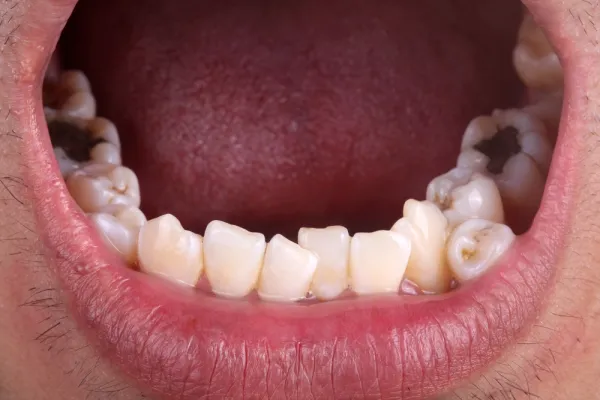Switch to K13.21 For Oral Leukoplakia Reporting in ICD-10

Hint: Use the same code for a diagnosis of leukokeratosis of oral mucosa.
If your oral surgeon diagnoses leukoplakia anywhere in the oral cavity, you will report it the same way as you did in ICD-9. However, a diagnosis of hairy leukoplakia has to be reported with a different ICD-10 code, unlike how you reported this condition in ICD-9.
ICD-9: When your clinician diagnoses a patient with leukoplakia of the oral mucosal structures, you report the condition with the ICD-9 code, 528.6 (Leukoplakia of oral mucosa including tongue). This ICD-9 code includes leukoplakia occurring anywhere in the oral cavity that includes tongue, gingival and the lips. You also use the same ICD-9 code when your clinician diagnoses a patient with leukokeratosis of the oral mucosa. You will report a diagnosis of hairy leukoplakia also with the same ICD-9 code.
Reminder: You cannot use 528.6 if your clinician diagnoses a patient with smoker’s palate or leukokeratosis nicotina palati. You report this with the ICD-9 code, 528.79 (Other disturbances of oral epithelium, including tongue) instead. If your clinician’s diagnosis is carcinoma-in-situ, you cannot use 528.6 to report the condition. You will have to report it with either 230.0 (Carcinoma in situ of lip oral cavity and pharynx) or with 232.0 (Carcinoma in situ of skin of lip) depending on the location of the lesion.
ICD-10: When you begin using ICD-10 codes instead of ICD-9, you will have to begin using K13.21 (Leukoplakia of oral mucosa, including tongue) for a diagnosis of leukoplakia of the oral cavity. Again, as in ICD-9, you will use the same diagnosis code in ICD-10 irrespective of where the condition is present in the oral cavity (gingival, tongue or the lips). Also, you use the same ICD-10 code for a diagnosis of leukokeratosis of the oral mucosa.
In ICD-10 too, you cannot use K13.21 for a diagnosis of leukokeratosis nicotina palati or smoker’s palate. You report this condition with K13.24 (Leukokeratosis nicotina palati). You cannot use K13.21 if your clinician diagnoses a patient with hairy leukoplakia. You report this with another specific ICD-10 code for the condition. You should use K13.3 (Hairy leukoplakia) for this diagnosis.
Focus on These Basics Briefly
Documentation spotlight: Some of the common findings that your clinician will record when he arrives at a diagnosis of leukoplakia of the oral cavity will include white patches on the mucosa of the oral cavity. These patches will usually be asymptomatic with no pain and many a times your clinician will discover them during routine examination. These patients will usually have a history of smoking and consumption of alcohol. Your clinician will also review the patient for loose fitting or ill-fitting dentures that might be impinging on the mucosa.
The patches are usually white in color and may or may not be palpable although when it becomes more advanced they are generally palpable from the rest of the mucosal area. Although it usually has a whitish opaque appearance, it may show a speckled appearance if the patient has verrucous leukoplakia (more potential for malignancy).
Tests: Once a diagnosis of oral leukoplakia of the oral cavity is suspected, your clinician will obtain a biopsy sample to confirm the diagnosis of the condition through histological findings. Your clinician might also repeat the biopsy if necessary to confirm the diagnosis as well as to assess it there are any changes such as deep cell keratinization, nuclear hyperchromatism, nuclear pleomorphism, loss of differentiation, etc that will help your clinician know whether or not there is any potential for malignancy. Also, histological findings will help rule out other conditions that might present with similar symptoms and will help confirm the diagnosis.
Based on history, signs and symptoms, results from tests and histological tests, your clinician will arrive at a diagnosis of oral leukoplakia.
Example: Your clinician reviews a 59-year-old male patient with complaints of whitish discoloration in the area of the gums and the cheeks. The patient had a history of a pack-a-day smoking and moderate alcohol consumption from the past 25 years. The patient had recently noticed the discoloration when examining his mouth in the mirror and was worried because of his smoking habits and approached your clinician even though there were no other symptoms.
Upon examination, your clinician notes the presence of whitish lesion on both sides of the buccal mucosa that extended to the area of the gingival. The lesion appeared to be slightly elevated and was palpable. There seemed to be no symptom of pain or tenderness.
Suspecting a diagnosis of leukoplakia, your surgeon obtained a biopsy specimen of the lesion and sent it to the lab for histological studies that confirmed a diagnosis of oral leukoplakia.
What to report: You report the biopsy performed with 40808 (Biopsy, vestibule of mouth). You report the diagnosis with K13.21 if you are using ICD-10 codes or report 528.6 if you are using ICD-9 codes.

